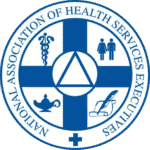Post-traumatic stress disorder (PTSD) may be under-recognized in the clinical world, but it is a real and growing problem. Providing healthcare in the United States is stressful, particularly lately, as the COVID-19 pandemic continues to disrupt the quality of life of your clinical providers. In normal times, nearly 80% of doctors report experiencing a patient event that they classify as distressing, and many end up with anxiety, depression, and PTSD. What is being done to treat these doctors? How is healthcare coping with what has been termed “the second victim?”
How Prevalent is PTSD in the Medical Field?
In 2000, an article in the British Medical Journal coined the phrase, “the second victim,” to refer to healthcare providers traumatized by events they have experienced on the job. The stress of an ER, the COVID-19 pandemic, overwork and burnout, and other factors, are causing a rash of PTSD in today’s clinical providers.
The American Association for Physician Leadership studied 212 residents and found that 13% were exhibiting some signs of PTSD. This is a higher percentage than the projected 8.7% projected risk of PTSD for the general population in the U.S.
Typically, we see five types of doctors more at risk of experiencing the clinical signs of PTSD:
- Emergency room physicians
- Physicians practicing in underserved or remote areas of the U.S.
- Medical residents
- Doctors involved in malpractice litigation
- Physicians who physically experience trauma while on the job
The issue for these physicians is that many are facing the stress and trauma of watching the life drain from people they’re trying to treat day in and day out. Breaking the news to families, seeing the enormous cost of violence, drugs, illness, and trauma—all of this causes a state of trauma in our nation’s clinical care teams.
Other contributing factors include overwork and insufficient resources. This could occur in predominately remote or rural regions where a lack of resources could contribute to stress and burnout.
However, doctors come out of medical school already stressed. Residents in training have a very high rate of PTSD, according to the data. These young providers come into the field already weary from a war zone of little sleep and constant pressure. The terror of potentially making a mistake during the learning process that could kill a patient could be a precursor to a PTSD diagnosis.
What Can Be Done to Help Doctors?
Some organizations have begun adding chief wellness officers into their HR rosters. Others have developed peer support groups to address the emotional, physical, and mental health of their “second victims.” Medical schools have recognized the phenomenon and have added a curriculum to help young students better recognize and handle the stress of PTSD. Confronting the issue means openly discussing it within learning communities before the doctor ever reaches their first career rotation.
By working together to take better care of our trusted and valuable clinical teams, we can ensure that they will get the on-the-job support they so desperately need. Contact our leading healthcare recruiters today for more information.





